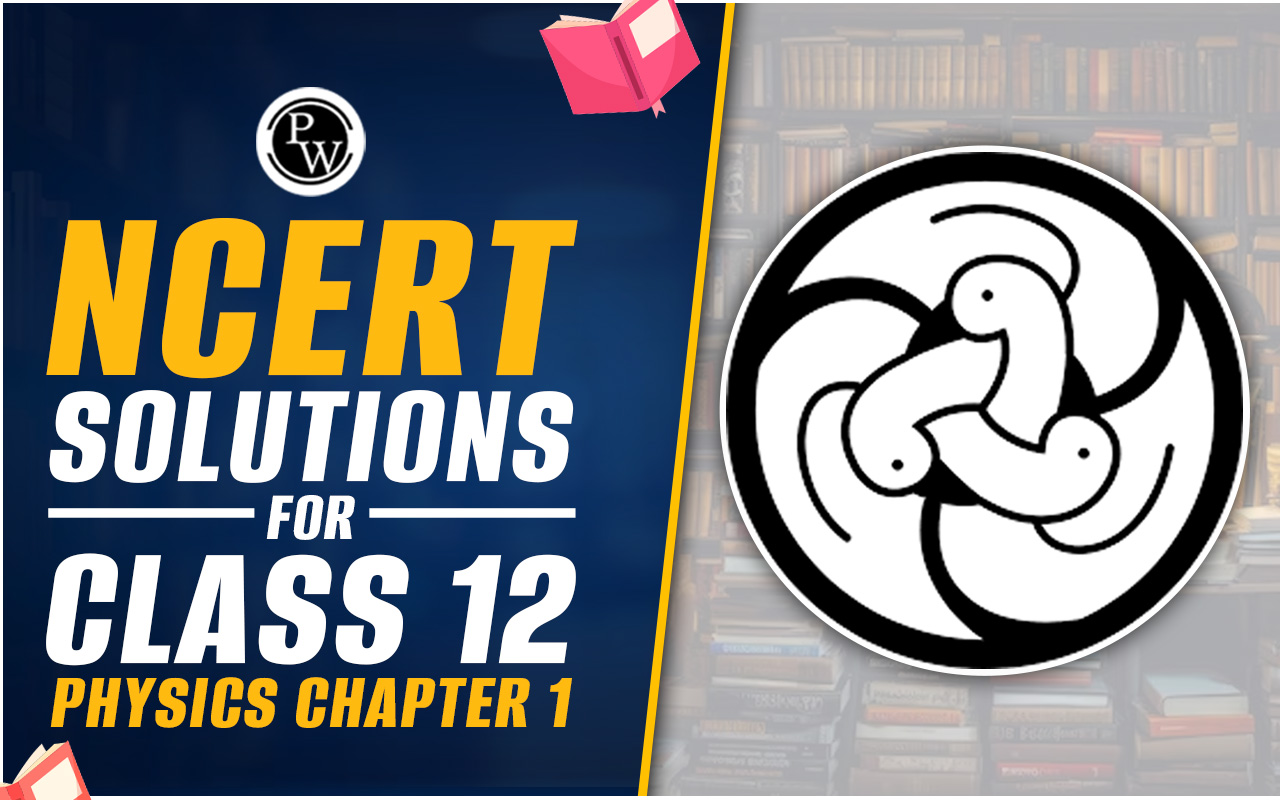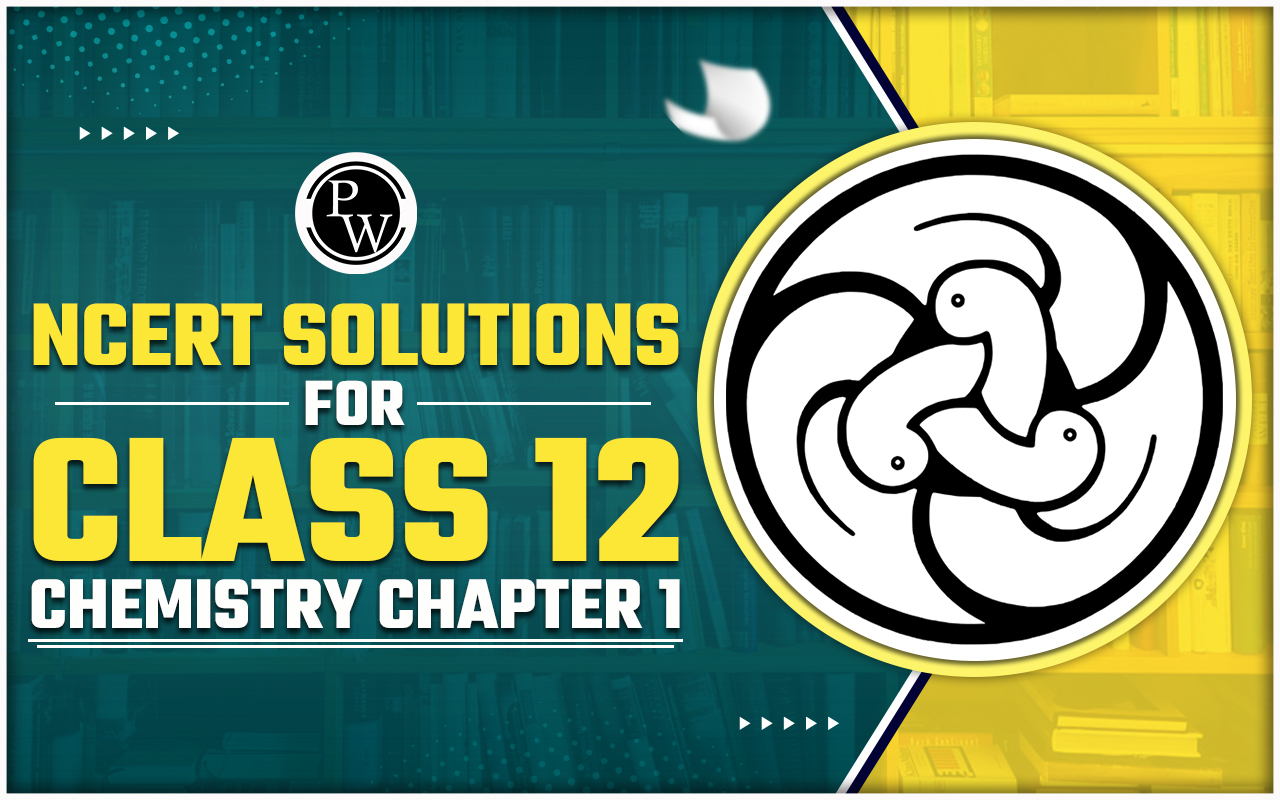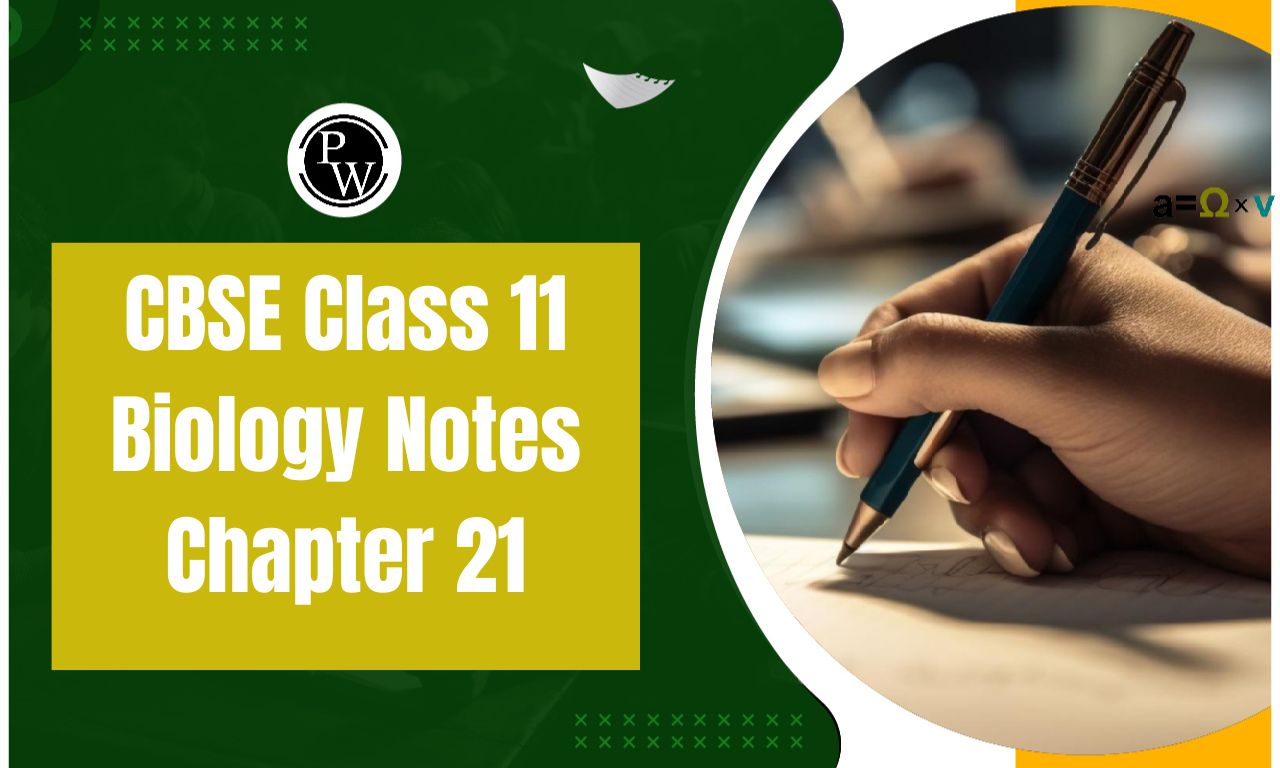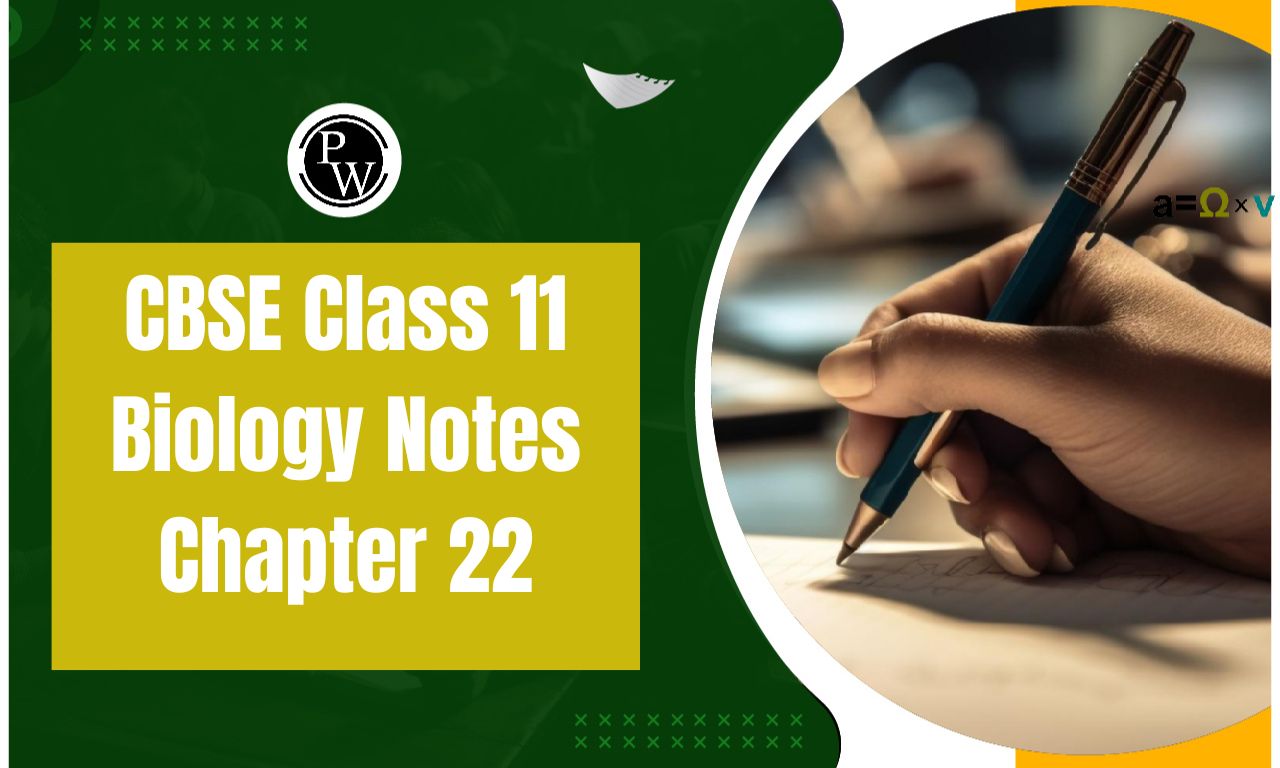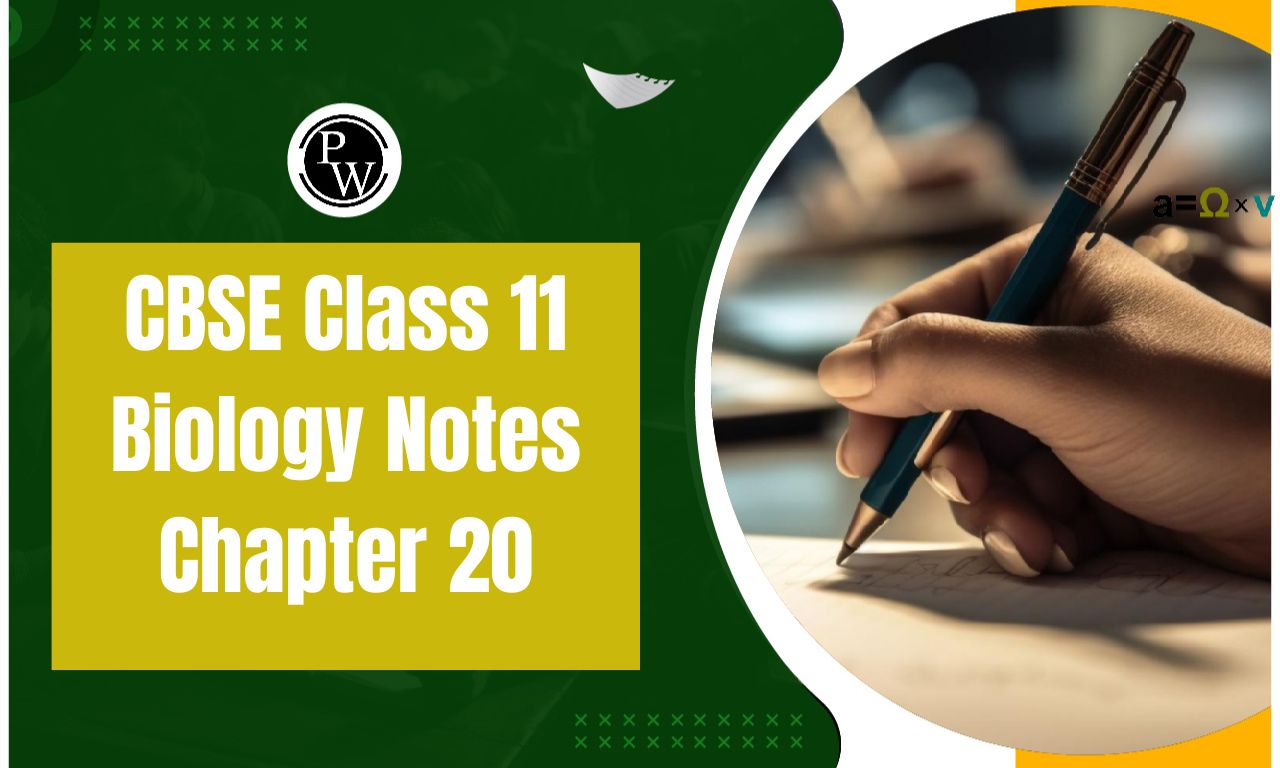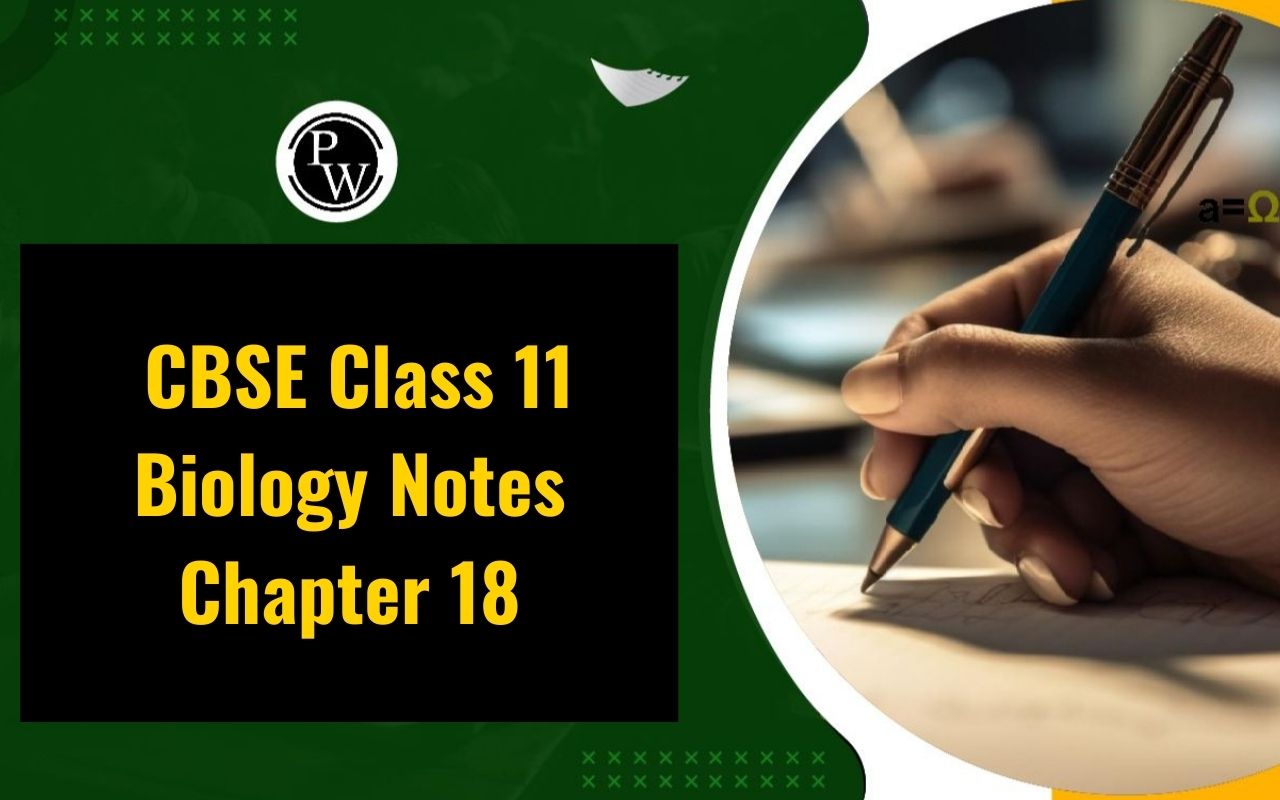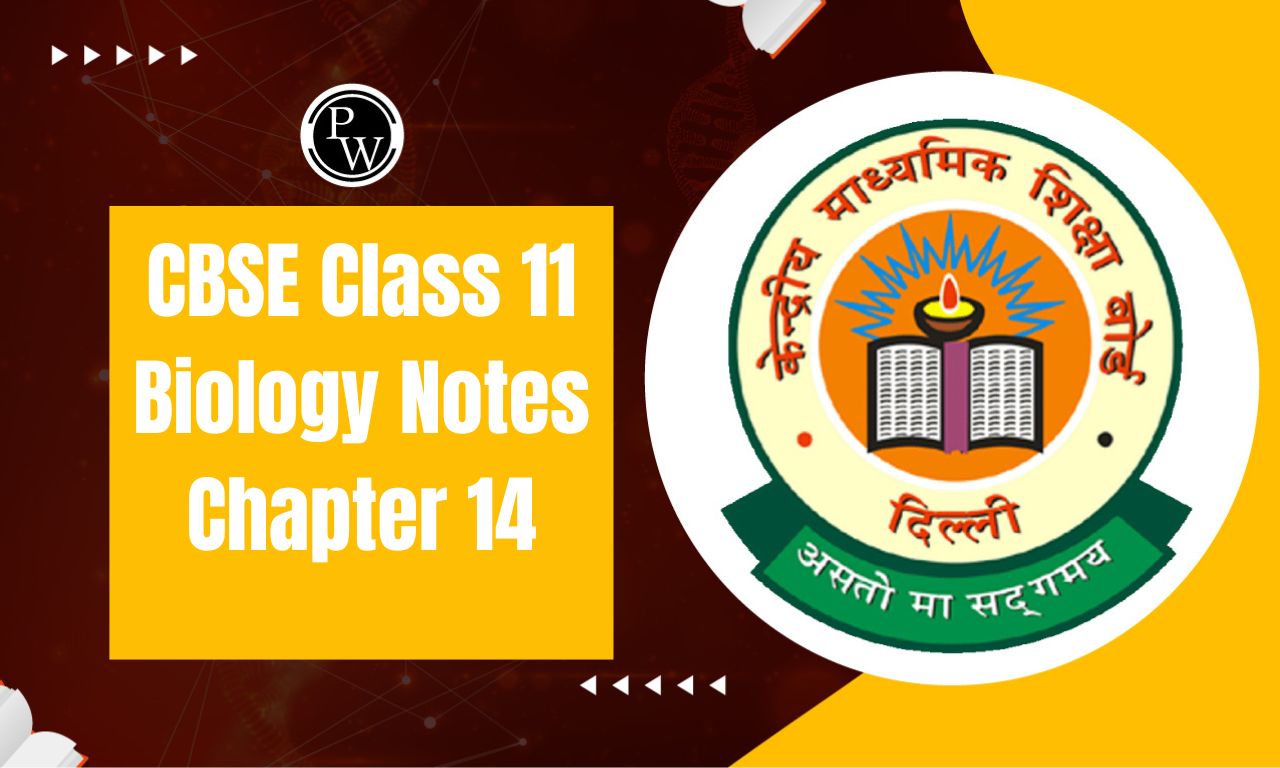
CBSE Class 11 Biology Notes Chapter 22: The class 11 Chemistry Revision Notes on Chemical Coordination and Integration aids students in comprehending the ideas covered in this chapter. The Class 11 Biology CBSE Curriculum has been followed in creating the Chapter 22 Revision Notes.
Students can simply download the chemical coordination and integration class 11 notes and refer to them at any time they wish to learn. The fact that the NCERT Class 11 Revision Notes Biology Chapter 22 are simple to read and improve test scores is their best feature.CBSE Class 11 Biology Notes Chapter 22 Overview
CBSE Class 11 Biology Notes Chapter 22 the subjects covered in Chemical Coordination and Integration include the pituitary glands, endocrine glands, hormones released from different glands, their functions, target organs, and many more. For a comprehensive and improved grasp of the concepts discussed in this chapter, as well as to clear up any issues they may have, students can use our CBSE Class 11 Biology Notes Chapter 22.CBSE Class 11 Biology Notes Chapter 22 PDF
Here we have provided chemical coordination and integration class 11 notes for the students to help them in their preparation journey. Students can use these notes for better preparation and understanding of the chapter. Also, we have mentioned CBSE Class 11 Biology Notes Chapter 22 pdf here so that you can easily use them without internet connection.CBSE Class 11 Biology Notes Chapter 22 PDF
CBSE Class 11 Biology Notes Chapter 22
Endocrine Glands
The glands that produce hormones are ductless. Hormones are the name given to their discharges. Hormones are classified as intracellular messengers and non-nutritive substances that are produced in minute amounts. Hormones do not participate in metabolic processes; rather, they only promote them.Human Endocrine System
The human body's endocrine glands are distributed throughout many regions. The pituitary, pineal, thyroid, parathyroid, thymus, adrenal, and gonads are among the several endocrine glands. Certain hormones are also produced by the gastrointestinal system, liver, and kidney.Properties of Hormones
- The endocrine glands release them straight into the bloodstream.
- They are usually transient in nature and do not contain any antigens.
- Hormones regulate many bodily functions and metabolic processes in order to preserve homeostasis.
- These are needed in extremely small amounts.
- Certain hormones operate swiftly.
- A few hormones are secreted in an inactive state, such as proinsulin. We refer to these as prohormones.
- Specific hormones are sent to particular target organs.
Classification of Hormones
The hormones can be classified into:- Lipid soluble hormones – These comprise thyroid and steroid hormones
- Water soluble hormones – These include peptide, protein and amine hormones.
The Hypothalamus
The base of the forebrain is where the hypothalamus is located. The hormone-producing nuclei in the hypothalamus are a collection of secretory cells. The hormones released by the brain control the synthesis and production of pituitary hormones. There are two categories of hormones that the hypothalamus produces:(i) the releasing hormones
(ii) the inhibiting hormones.
For instance, the pituitary releases gonadotropins in response to stimulation from the gonadotropin-releasing hormone. The portal circulation system helps these hormones get to the pituitary gland.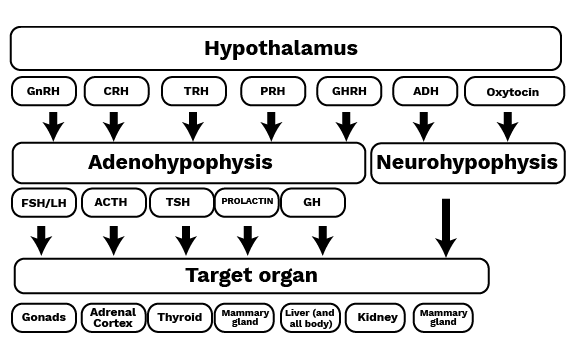
The Pituitary Gland
The sella turcica, a hollow that is connected to the hypothalamus by a stalk, houses the pituitary gland. Adenohypophysis, or the anterior pituitary, and neurohypophysis, or the posterior pituitary, are its two divisions. The adenohypophysis secretes several hormones, including growth hormone, prolactin, follicle-stimulating hormone, thyroid-stimulating hormone, melanocyte-stimulating hormone, and luteinizing hormone. Neurohypophysis is the process by which oxytocin and vasopressin are released.The Pineal Gland
The dorsal side of the forebrain is where the pineal gland is located. Melatonin is a hormone secreted by the pineal gland. The melatonin hormone controls the body's 24-hour rhythms, including body temperature and the sleep-wake cycle. Melatonin regulates the sleep-wake cycle in addition to:(i) metabolism
(ii) pigmentation
(iii) menstrual cycle
(iv) defense capability

Thyroid Gland
The trachea has thyroid glands anteriorly and on either side of it. A bilobed gland is connected by an isthmus. Thyroid follicles, which are connected by connective tissue to form the lobules of the thyroid gland, are referred to as stromal tissues. Tetraiodothyronine, also known as thyroxine (T4), and triiodothyronine (T3) are the two hormones that are produced by the follicular cells that make up thyroid follicles. Iodine is an essential component needed for the creation of thyroid hormones. Iodine deficiency will cause hypothyroidism, often known as goitre. Hypothyroidism during pregnancy has an impact on the developing baby's growth and mental health. There will be deafness, aberrant skin, and a low IQ. When hypothyroidism occurs in adult women, the menstrual cycle will be erratic. Hyperthyroidism is the term used to describe a situation in which there is an excess in thyroid hormone secretion. Exophthalmic goitre, often known as Graves' disease, is a kind of hyperthyroidism characterised by weight loss, protrusion of the eyeballs, elevated basal metabolic rate, and thyroid gland enlargement.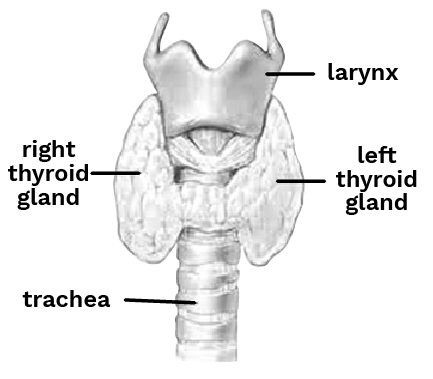
Parathyroid Gland
Humans normally have four parathyroid glands: an inferior and a superior gland that are situated right beneath the thyroid's upper and lower poles. The parathyroid gland secretes a peptide hormone known as parathyroid hormone. The following outcomes are caused by it:(i) Maintenance of proper calcium and phosphate level in blood.
(ii) Role in bone formation.
(iii) Excretion of calcium and phosphate.
(iv) Effect on intestinal absorption of calcium, phosphate, and vitamin D.
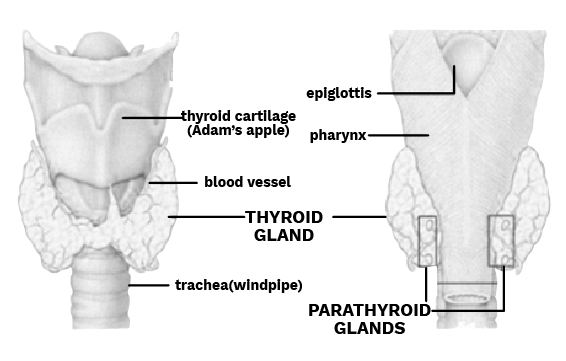
Thymus
The position of the thymus is in between the lungs behind the sternum. An vital function is played by them in the development of the immune system. This gland secretes a hormone known as thymosin. It participates in cell-mediated immunity. It also participates in the synthesis of antibodies.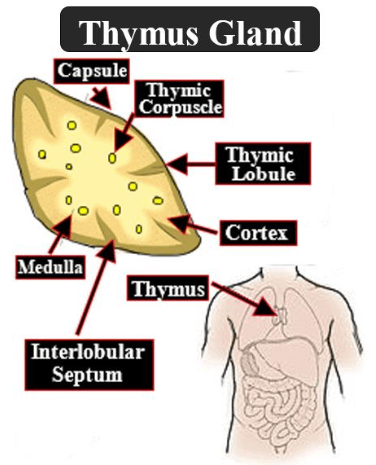
Adrenal gland
These two glands are situated in the kidney's front region. It is made up of two different tissue types: the inner medulla and the outer adrenal cortex. Adrenaline and noradrenaline are two hormones that are produced by the adrenal medulla. Since adrenaline is released during the fight-or-flight response, it is often referred to as an emergency hormone. The hormone adrenaline causes perspiration, pupil dilation, and increased alertness.
The 3 layers of adrenal cortex are-
(i) zona reticularis (inner layer),
(ii) zona fasciculata (middle layer), and
(iii) zona glomerulosa (outer layer).
Corticoids are the general term for hormones derived from the adrenal cortex. Glucocorticoids are corticoids that have a role in the metabolism of carbohydrates. They promote gluconeogenesis, lipolysis, and proteolysis. Glucocorticoids, such as cortisol and cortisone, have an anti-inflammatory and immune-suppressive effect. Cortisol makes up 95% of the glucocorticoid activity.
Mineralocorticoids are corticoids that aid in controlling electrolyte balance and water content. The primary hormone of mineralocorticoids is aldosterone. It facilitates the excretion of potassium and phosphate ions as well as the reabsorption of sodium ions and water.
Pancreas
It is believed that the pancreas is a dual gland since it has both endocrine and exocrine functions. The islets of Langerhans, which make up the endocrine portion of the pancreas, are mostly composed of beta and alpha cells. Whereas beta cells release insulin, alpha cells secrete the hormone glucagon. Normal blood glucose is maintained by glucagon. Blood glucose levels rise as a result of it. Moreover, it encourages gluconeogenesis. Thus, the hormone glucagon is hyperglycemic.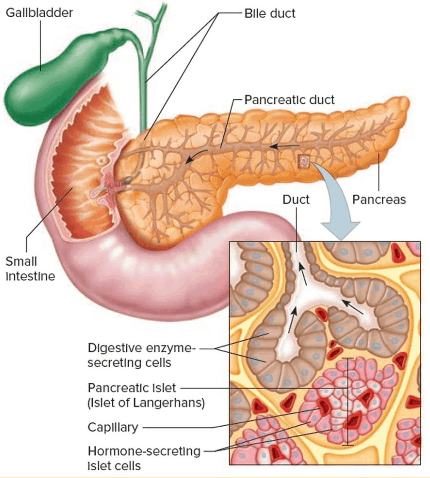
Testes
The testes are located in the scrotal sacs, which are sacs that are external to the abdominal cavity. They serve as the principal organ for sex and have endocrine functions. Interstitial cells and seminiferous tubules are found in the testis. Testosterone is secreted by Leydig cells and interstitial cells. This hormone controls the maturity of male accessory sex organs, beard and moustache growth, and spermatogenesis.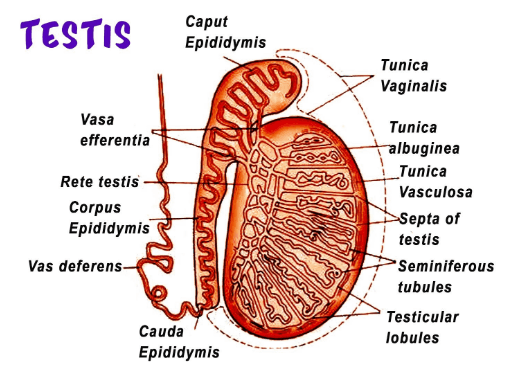
Ovary
The lower pelvic area of the abdominal cavity contains the paired ovaries. It is one of the main organs used during sex. The primary function of the ovaries is to produce ova, or eggs, as well as the hormones progesterone and oestrogen.Estrogen Helps in -
(i) development of accessory sex organs.
(ii) development of mammary glands.
(iii) menstrual cycle.
(iv) ovulation.
(v) water balance, by increasing water content and thickness of the skin.
Progesterone is responsible for changes during pregnancy hence, called pregnancy hormones.
Progesterone Helps in -
(i) enhancing the blood supply of the wall of the uterus.
(ii) placentation.
(iii) development of breast during pregnancy.
(iv) helps in premenstrual changes in the uterus.
(v) also helps in the promotion of retention of water and sodium salts by affecting kidney functions.
Mechanism of Hormone Action
The target tissue's activity levels are regulated and controlled by a variety of hormones. Hormones act on certain tissues through binding to hormone receptors. In the target tissue, the hormone-receptor complex that forms will cause certain biochemical alterations. It is inevitable that hormones will interact with both intracellular and membrane receptors. Peptide hormones often attach to membrane receptors, while steroid receptors are typically found inside cells.
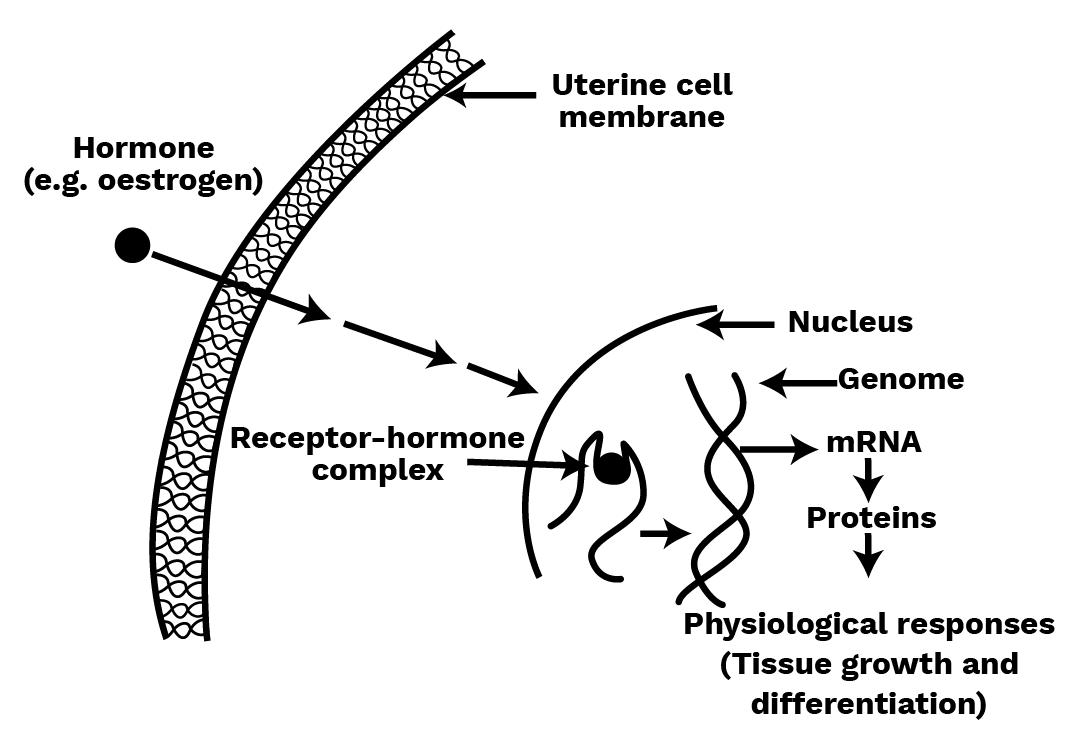
Hormones of Kidney, Gastrointestinal Tract, and Kidney
A hormone known as atrial natriuretic factor (ANF), secreted by the heart wall, lowers blood pressure. An rise in blood pressure causes the release of ANF. Erythropoietin is the hormone that kidney cells secrete and it aids in the encouragement of red blood cell production. The gastrointestinal tract secretes cholecystokinin, gastrin, secretin, and gastric inhibitory peptides.Benefits of CBSE Class 11 Biology Notes Chapter 22
Associated with the Most Recent Exam Patterns and Syllabus: Students are guaranteed to concentrate on the most pertinent themes and formats that they are likely to encounter in their Class 11 Biology exams thanks to our fundamental subjective questions and Biology Class 11 notes, which are designed to correspond with the most recent syllabus and exam patterns.
Topic Coverage: The Class 11 Biology notes PDF covers a broad range of topics, giving students the opportunity to practise and comprehend different concepts in the subject. Building a solid foundation in the subject topic is aided by this discussion of fundamental subjective questions.
Comprehensive and Simple to Understand Solutions: We offers comprehensive answers, which help students better understand difficult concepts and grow from their errors.
Finding Weak Areas: Students can pinpoint particular topics that need more work and attention by consulting our subjective questions and the notes from Class 11.
Enhancement of Problem-Solving Ability: Consistently rehearsing 1 and 2 mark questions with notes Revision notes aid in the development of students' analytical and critical thinking abilities.
Increasing Confidence: Subjective questions and the Biology Class 11 notes PDF help students become more confident in the material, which improves their exam scores.
CBSE Class 11 Biology Notes Chapter 22 FAQs
What is the role of hormones in chemical coordination?
Why is chemical coordination necessary?
What is the chemical control and coordination of human beings?

